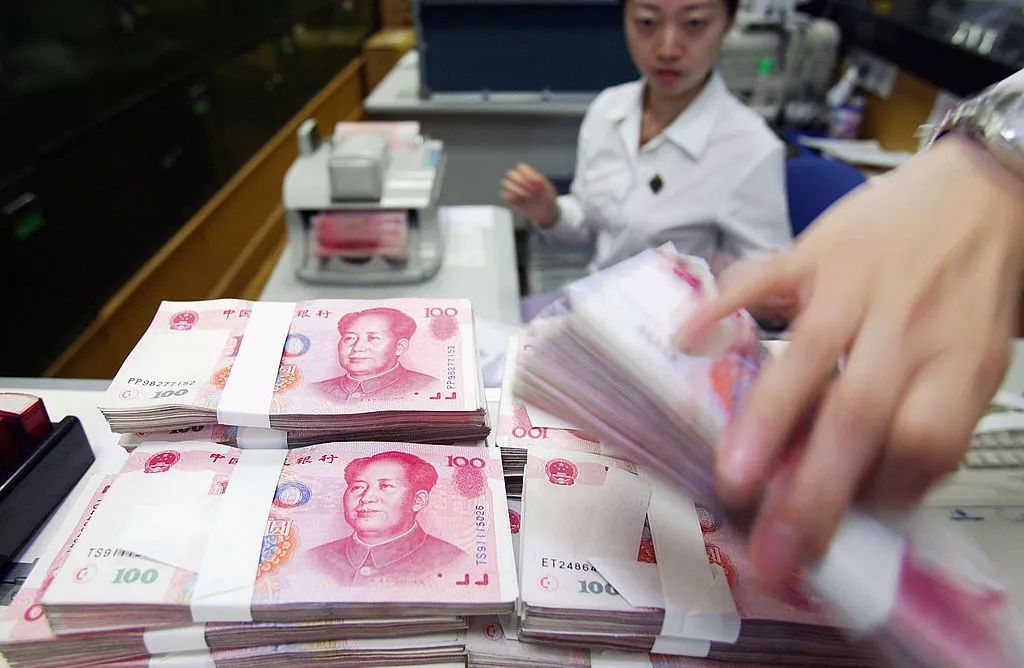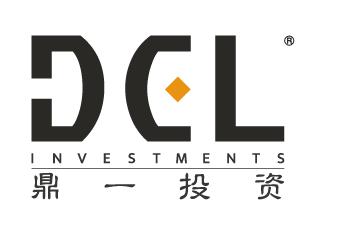By Feng Tao
Selina Zheng, President of DCL Investments said that China’s economy will still maintain a relatively strong growth trend in the future. Although it is now undergoing a mid-term adjustment process, this is also the best time for distressed asset investment.
Written By Feng Tao,Chief Editor of Investment and Wealth Management of FT Chinese Website
With the emergence of China’s macroeconomic operating cycle, investment in distressed asset has gradually surfaced and entered the public’s field of vision. There is a view that the most difficult time is also the most promising time for distressed assets. Distressed asset investment usually ushers in trendy opportunities in a cycle of substantial economic adjustment. Just as vultures forage in carrion, when vulture funds come to a crisis, they begin to “hunt for food” in an attempt to find more gold in the sand.
The investment objectives of distressed investments are those companies that are in financial distress, have operational difficulties, are on the verge of bankruptcy, or have been terminated mistakenly because of the financial crisis. In developed markets such as Europe and the United States, distressed investment funds are mainly operated by private equity funds or hedge funds, and are mainly invested in non-performing assets and “junk bonds” of troubled companies. In China, since the establishment of big four asset management companies (AMCs) in 2000, distressed asset investment has gradually evolved. Nowadays, it is more like a systematic and institutionalized market.
Since 2013, after the regional financial risks in Jiangsu, Zhejiang, Shanghai, Guangdong and other economically active areas have been pierced, the supply of distressed assets has greatly increased. According to statistics, the balance of non-performing loans on the balance sheet of commercial banks has exceeded RMB 2 trillion. Such a market environment provides very good investment opportunities for private equity investors such as DCL, which solely focuses on distressed assets. The deepest participation in this round of distressed asset cycles since 2013 is also the reason why DCL Investments can grow and grow rapidly.
In response to the opportunities and challenges of distressed asset investment, the relationship between distressed investment and macroeconomics, the current situation of China’s distressed asset investment industry, and how investors participate in the distressed asset investment, FT Chinese has interviewed Ms. Selina Zheng, president of DCL Investments.
Interview Record:
FT Chinese: How to understand the phrase “distressed asset investment: good business in bad times”?
Selina Zheng: I think the right thing about this sentence is the distressed, that is, the macro economy does encounter challenges in the process of asset investment, which includes both the challenges of the macroeconomic environment and the micro-level challenges of specific industries. With such adjustments, a new round of investment opportunities for distressed assets will be created, so this statement, to some extent,is correct. But this statement is not entirely correct, because I personally believe that the best time to invest in distressed assets does not occur in a situation of economic collapse, political instability, and social turmoil, but when an economy or an industry encounters certain kind of adjustment, especially when the asset holders face reshuffling during the in-depth adjustment process, these assets have room for renegotiation. In other words, the essence of distressed asset investment is not that there is a problem with the asset itself, but a variety of problems with the original holder of the asset. As a new buyer, we have bargaining power with the original holder. This means that we can leverage the fluctuations in the external macro environment to trigger the plight of the original asset holders and obtain the high-quality assets we believe at a more reasonable price or even lower prices.
“Bad” in “good business in bad times” only expresses a part of the meaning in the middle, that is, large fluctuations and adjustments in the macroeconomic cycle, but in fact, the regions and industries targeted by distressed investments are still in the medium and long term in the future. The overall situation is good. Under such background, it is the best opportunity for investment in distressed assets.

Specific to China, the market consensus is that the Chinese economy is enduring an L-shape adjustment, where the bottom of the L-shape will run for a longer period of time. But I think that for all reasons, China’s economy will maintain a relatively strong growth trend in the future, although it is now undergoing a mid-to-long-term adjustment process. This is also one of the important reasons why I think this is the best era of investment in distressed assets.
FT Chinese: What is the path to revitalizing distressed assets?
Selina Zheng: Our distressed asset investment strategy is not simply buying low and selling high. What we do is to build up a comprehensive portfolio. On one hand, we focus on the high turnover business, that is, we buy assets sold from the big four AMCs, financial institutions (including banks and non-bank financial institutions), large state-owned enterprises, and private enterprises in batches every year. We find that the types of sellers are becoming more diverse. When the economy is booming, these assets will not easily expose “problems”, but when the industrial structure is adjusted and financial institutions is experiencing deleveraging, some assets will flow into the market from financial institutions or large enterprises. After we purchase these assets in portfolios, we will dispose some of the assets after professional asset classification. But at the same time, we will also acquire some assets that we think have restructuring value. We will operate these assets relying on our rich experience of asset management and we believe that these assets will maintain a relatively stable price during the economic fluctuation cycle. Once the economy recovers, they can bring a higher premium first.
Here I want to highlight our valuation and pricing ability when buying assets in bulk is also one of the core capabilities of DCL. No matter whether it is a NPL acquisition or a single-loan acquisition, DCL Investments must evaluate each asset separately. In theory, this means that our pricing is also the closest to scientific pricing. Of course, sometimes deviations in asset pricing are inevitable. Fortunately, all of our core team members have been in this industry for more than ten years. Their professional knowledge, actual execution capability and career stability, and our team ’s standardized management system (For example,the asset management team participates in the project at the time of investment, etc.) can reduce the valuation and pricing risks.
FT Chinese: Can you tell us about the current status of China’s distressed asset investment industry?
Selina Zheng: After more than 5 years of rapid growth, DCL Investments has attracted increasing attention from the industry. At the same time, more and more people participate in distressed investment, making the ecosystem of the entire industry more and more complete, which also shows from another angle that the market size of China’s distressed investment at this stage is not as large as those developed market. Although DCL currently has a great advantage in industry competition, we have been adhering to a positive and optimistic attitude to face the further expansion of the entire industry.
From the perspective of market segmentation, the big four AMCs in China are relatively mainstream participants, and a number of distressed asset investment funds have also emerged. Of course, some investment banks and foreign funds are also doing business in this specific area. In terms of timeline, China ’s distressed investment industry is still in its initial stage. After all, this industry started in China in 2000, when the big four AMCs were first established, but some global investors participated in China distressed market early than 2000. This also indirectly shows that this industry has been very international and standardized since the beginning, because at that time we were all referring to the international guidelines. In addition to the big four AMCs in the leading position, there are also some private investors. It is against this background that DCL Investments participated in this market, and we position ourselves as the backbone of this industry. At the same time, we are also an extension of the disposal way of the industry’s leading companies, that is, we are willing to do the “hard work” of asset disposal. Of course, from a strict sense as mentioned above, we are not the downstream of the big four AMCs, but a differentiated player within the ecosystem. We can not only purchase assets with them together, but also buy their assets and help them in disposition .
From a global perspective, investment in distressed assets is very localized. The globalization mentioned above mainly refers to that its business model and underlying business logic are at global standard. However, specific to various regions and countries, investment in distressed assets has always been a very local business, because different regions have different political, legal, and business environments, and the differentiation is obvious. Therefore, distressed investment is not only a highly internationalized business model, but also applied in a very localized and regionalized operating system. All in all, the concept is international, but the actual operation is localized.
FT Chinese: What is the future development trend of China’s distressed asset investment?
Selina Zheng: First of all, I think that in the next 5-10 years, China will surely have distressed asset management companies with asset management scales of hundreds of billions RMB, because the market volume is constantly expanding. Secondly, as a participant in the industry, DCL Investments hopes to solve problems, restore value, and achieve a win-win situation as much as possible through our own capabilities. Through staged holdings, these assets will regain their value after periodic adjustment. Finally, from a regulatory perspective, the current regulatory policy is actually very supportive of distressed assets investment, although of course there will be imbalances between different regions.
FT Chinese:How can investors participate in distressed asset investments?
Selina Zheng: In our perspective, the investors suitable for investment in distressed assets are those funds that can pass through the cycle to obtain long-term stable income. Since our inception, DCL Investments has been a fund manager which mainly manage the funds from institutional investors, which has also led us to not go to the retail side from the beginning. However, since the second half of last year, we have seen that some domestic family offices, professional individual investors, and high-net-worth people have begun to have a strong interest in distressed asset investment. These people are actually suitable for distressed investment as they need stable income but not irrational or speculative products.

FT Chinese: How about the future direction of DCL Investments?
Selina Zheng: First of all, from a regional perspective, in fact, the world ’s large distressed asset investment company has a very long life cycle. It does mean that they can do business both in a crisis and in a prosperous economy. For distressed investment, the opportunity is fast moving around the globe, so our plan it to capture the local opportunity and then to globalize. DCL has already taken the first step in this regard. In the future, we will also achieve our goal step by step to be a scale, globalization, and finally move toward a company with cross-border investment capabilities.
Secondly, from the perspective of distressed asset categories, because this type of investment involves lots of categories, during the economic boom, most asset prices are relatively stable, and investors do not have many opportunities to quickly acquire low-priced assets, but this does not mean that there is none. For example, the internet bubble burst in the United States in 2000, when the entire internet industry was in a period of integration, but the US economy and the global economy were in a normal environment at the same time. A similar situation is believed to be not uncommon in the future. Even if the Chinese economy restarts a new wave of economic growth after this round of adjustments, it will also face the integration of new and old industries in the same period. This is definitely our opportunity.
In short, the sign of a company’s maturity lies in the area and depth of its industry and abilities with both breadth and depth. Only these two conditions are met at the same time, the company can play as a value restorer in both bad and good times. After all, we have never been a speculator in bad times. We are only committed to helping our investors locate more opportunities to acquire high quality assets in bad times.
This article only represents the author’s own views
Responsible Editor Feng Tao Tao.feng@ftchinese.com
Photo source Getty Images, FT Chinese website

